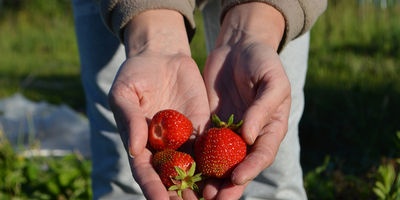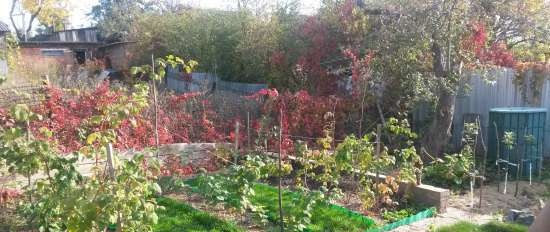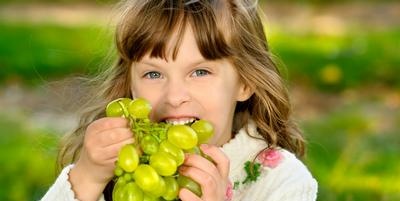Soil cultivation |
|
In the area allotted for the personal plot, it is necessary first of all to uproot the stumps, if any, remove stones and debris, fill up holes, level the mounds. On steep slopes, where there is a danger of soil washout, the slopes should be fixed by arranging continuous or separate terraces for planting fruit trees. Subsequently, it is recommended to maintain black steam on the terraces, and reinforce the slopes with turf or support walls of stone, stakes and boards. If the site is lowered or there is a significant saucer-shaped depression on it, which is difficult to fill with soil, it is necessary to dig a drainage ditch to discharge excess water. If such a decrease takes place over several estates or throughout the entire collective garden (village), then it is best to carry out general drainage in an organized manner, since carrying out radical reclamation work on one site often does not reach the goal, and sometimes it is not possible for one land user to carry them out. In some areas, there is groundwater close to the surface or rocks and gley horizons that are difficult to penetrate for roots. ... But even in such places it is possible to lay a garden, only here it is necessary to create a layer of vegetative soil 40-60 cm high in the form of separate gentle hills or solid shafts and plant fruit plants along their crest. To do this, the plant soil is raked in the form of wide shafts from the middle of the row spacing or delivered from other areas.
It should be borne in mind that not all varieties of fruit crops grow well on such rootstocks and that such gardens are less durable, since the roots, having reached low-permeable soil layers, will hurt and will not be able to ensure the normal growth and development of trees. The first signs of the influence of unfavorable conditions are the dry top of the planted trees, their weak, depressed state, severe burns, frostbite, wood diseases, metallic sheen, shrinking and chlorosis of leaves. Timely carrying out of the necessary reclamation works can significantly prevent these phenomena. When developing a personal plot, the first concern should be the cultivation of the soil. It is necessary to apply organic fertilizers (manure, peat, rotting small household rubbish, fecal and other composts) to the top layer of the earth before planting, at a rate of up to 8-10 kg per square meter. Depending on the degree of cultivation of the soil and the possibilities for the delivery of fertilizers, this rate can be increased, which is especially useful on podzolic soils, or decreased. Fertilizers should then be applied both during planting and during further plant growth. Cultivation of the soil is not only a one-time method of enriching it with organic substances. This is a rather long process, as a result of which the biological activity of the soil increases (due to the work of soil microorganisms and applied with organic fertilizers). For the cultivation of the site, in addition to the application of fertilizers, it is required to apply a whole system of measures, which includes both proper tillage and reclamation work. As a result, the soil on the site gradually changes. The light gray color of podzolic soils takes on a darker color due to the introduction of organic fertilizers. The soil acquires a loose, crumbly structure, the lumpiness disappears, it is easily cultivated, many earthworms appear, which, with their moves, provide air access to its deeper layers. In general, the soil is becoming more and more fertile, its chemical, biological composition and physical properties are changing.
Fruit trees, primarily apple and pear trees, thrive better on medium to light loamy soils with a subsoil permeable to water and air. Therefore, one should strive to make heavy clays lighter by adding sand, peat and other loosening materials to them, if possible. Some began to lay a layer of broken bricks 10-12 cm thick at the bottom of the planting pit. As a result, plant growth improved, since favorable conditions for air and water drainage were created. To improve light soil with a sandy subsoil, on the contrary, it is necessary to add clay to the bottom of the planting pit, as well as peat, which increase the moisture and cohesion of light soils. In such cases, many gardeners put clay in a layer of 8-10 cm, which somewhat retains water - at the bottom of the hole a layer of soil is created, which is more saturated with moisture. Podzolic soils, as a rule, have an increased and sometimes high acidity, which has a depressing effect on the biological activity of soil microorganisms. This leads to a decrease in the effectiveness of many fertilizers and a deterioration in plant nutrition. To reduce the acidity of the soil, it is necessary to add lime materials in ground form during its processing: marl, lime, lime tuff, chalk, bone, dolomite, phosphate rock, old plaster at the rate of 300-400 g or more per 1 sq. m. It should be borne in mind that liming the soil just once is not enough. Liming must be carried out after four to five years, since over time, the first dose of lime, with repeated tillage, is mixed with a large volume of soil and its effect dies out. In the aisles of the backyard garden, it is very useful to cultivate green manure plants to embed all their green mass into the soil. We are talking about crops such as annual and perennial lupine, horse beans, vetch, clover, lyadvenets, sweet clover and others. These plants on soils filled with phosphorus-potassium fertilizers, grow during the growing season to 3-5 kg of green mass per square meter and form about the same amount of root residues in the soil. In addition, deeply penetrating roots of lupine, beans, clover accumulate nitrogen in the form of nodule bacteria and drain the soil, improving its water and air permeability. Perennial lupine should be sown in early spring, immediately after the snow melts (along the "shard"), or in late autumn on frozen soil, before the snow cover falls. The seeding rate of lupine is 5-6 g of seeds per square meter. Of great interest to gardeners is the perennial lupine of garden forms, which, in addition to a large amount of green mass, also gives beautiful flowers. It can be sown directly into the ground with seeds and planted with seedlings grown in a separate bed.
Sowing clover in pure form or mixed with timothy also gives good results. The aerial portion of these plants can be used for hay, composting with soil and peat, or for mulching near-stem circles. In the second year of life, clover is mowed and laid in the soil as fertilizer. However, it must be remembered that with poor soil maintenance and the presence of a large amount of plant debris on the site, mice are bred, which find reliable shelters in places covered with perennial lupines and perennial grasses. With the use of green manure, a systematic fighting mice.
During the preliminary cultivation of the soil for planting a garden, it is advisable to close up fecal fertilizers when digging a site. To do this, they are diluted with water 4-5 times or used frozen, adding 5-8 kg (bucket) per square meter. Frozen fecal matter should be scattered in early spring over melting snow or over an ice crust. Feces, composted with organic residues and peat, are also introduced into the trunks of fruit and berry plants (3-4 kg per square meter). Peat-fecal compost is applied under the plants when digging the soil in autumn or early spring. Fecal fertilizers contain from 0.5 to 1% nitrogen, 0.15-0.2% phosphorus and potassium. The use of this type of organic fertilizers in personal plots is a widely available and effective way of soil cultivation. The systematic introduction of composting urban waste and fecal matter makes it possible to dramatically increase the fertility of heavy soddy-podzolic soils and bring the humus content in them to 4-6% versus 1.5-2% in soils of the same type. K. S. Dukhanin |
| Why do gladiolus bulbs get sick? | Willow |
|---|
New recipes
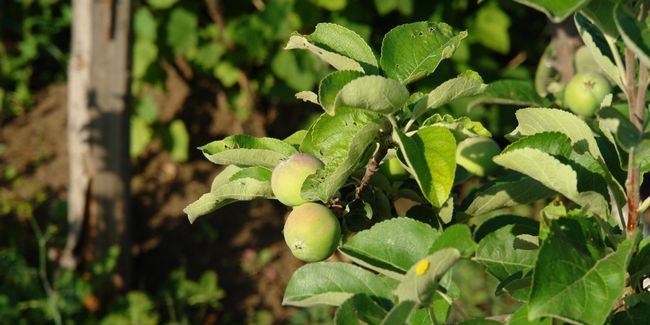 All fruit and berry and vegetable plants are demanding on soil fertility. Therefore, the cultivation of the soil for a garden and a vegetable garden before starting the development of the site, as well as in subsequent years, is one of the main and difficult tasks associated with the introduction of organic, mineral fertilizers, liming with soil acidification, systematic processing of the site, weed control, etc. ...
All fruit and berry and vegetable plants are demanding on soil fertility. Therefore, the cultivation of the soil for a garden and a vegetable garden before starting the development of the site, as well as in subsequent years, is one of the main and difficult tasks associated with the introduction of organic, mineral fertilizers, liming with soil acidification, systematic processing of the site, weed control, etc. ...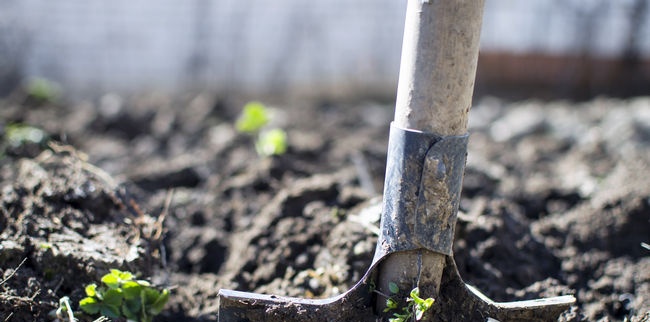 On ramparts and hills, it is advisable to plant seedlings of fruit plants on rootstocks with a less deeply-lying, small-celled root system. These rootstocks include: for apple trees, along with the Chinese muddy Ranetka purple, undersized rootstocks of paradizka and dusen (the so-called dwarfs and half-dwarfs), for pears - irga, hawthorn and mountain ash, for plums - blackthorn, for cherries - steppe forms of cherries.
On ramparts and hills, it is advisable to plant seedlings of fruit plants on rootstocks with a less deeply-lying, small-celled root system. These rootstocks include: for apple trees, along with the Chinese muddy Ranetka purple, undersized rootstocks of paradizka and dusen (the so-called dwarfs and half-dwarfs), for pears - irga, hawthorn and mountain ash, for plums - blackthorn, for cherries - steppe forms of cherries. The non-chernozem zone is dominated by heavy clayey, loamy and sandy loam soils (strong and moderate podzolization). In the southern regions, there are also gray forest soils and chernozems of varying degrees of fertility and leaching. Most of these soils, with the exception of chernozems, are poorly cultivated. Here it is especially necessary to deepen the arable zone, apply organic and mineral fertilizers and carry out liming.
The non-chernozem zone is dominated by heavy clayey, loamy and sandy loam soils (strong and moderate podzolization). In the southern regions, there are also gray forest soils and chernozems of varying degrees of fertility and leaching. Most of these soils, with the exception of chernozems, are poorly cultivated. Here it is especially necessary to deepen the arable zone, apply organic and mineral fertilizers and carry out liming.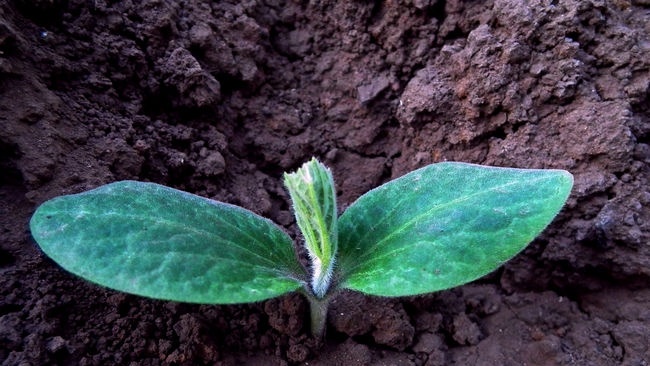 In the first year of its life, perennial lupine forms rosettes and only a little green mass. In the second year, with good care, he gives up to two mows.Therefore, it should be kept in one place for two to three years. The mowed green mass can be composted with soil or used to mulch the trunks in the garden. In the last year of use, lupines are mowed during the flowering period and, together with the roots, are buried in the soil with shovels. Annual lupine is sown only in early spring or in the middle of summer at the rate of 15-20 g of seeds per square meter. They are buried in the soil no deeper than 3-4 cm. When horse beans are used as green manure, they are planted in rows, laying the grain from the grain at a distance of 6-7 cm.
In the first year of its life, perennial lupine forms rosettes and only a little green mass. In the second year, with good care, he gives up to two mows.Therefore, it should be kept in one place for two to three years. The mowed green mass can be composted with soil or used to mulch the trunks in the garden. In the last year of use, lupines are mowed during the flowering period and, together with the roots, are buried in the soil with shovels. Annual lupine is sown only in early spring or in the middle of summer at the rate of 15-20 g of seeds per square meter. They are buried in the soil no deeper than 3-4 cm. When horse beans are used as green manure, they are planted in rows, laying the grain from the grain at a distance of 6-7 cm. Recently, in the practice of commercial and home gardening, fecal fertilizers, composted with peat or diluted with water, have been successfully used to cultivate the soil. A high (60–70 °) temperature is created in compostable organic materials, therefore, feces in such composts are disinfected from helminths (worms) and lose a sharp, unpleasant odor.
Recently, in the practice of commercial and home gardening, fecal fertilizers, composted with peat or diluted with water, have been successfully used to cultivate the soil. A high (60–70 °) temperature is created in compostable organic materials, therefore, feces in such composts are disinfected from helminths (worms) and lose a sharp, unpleasant odor.